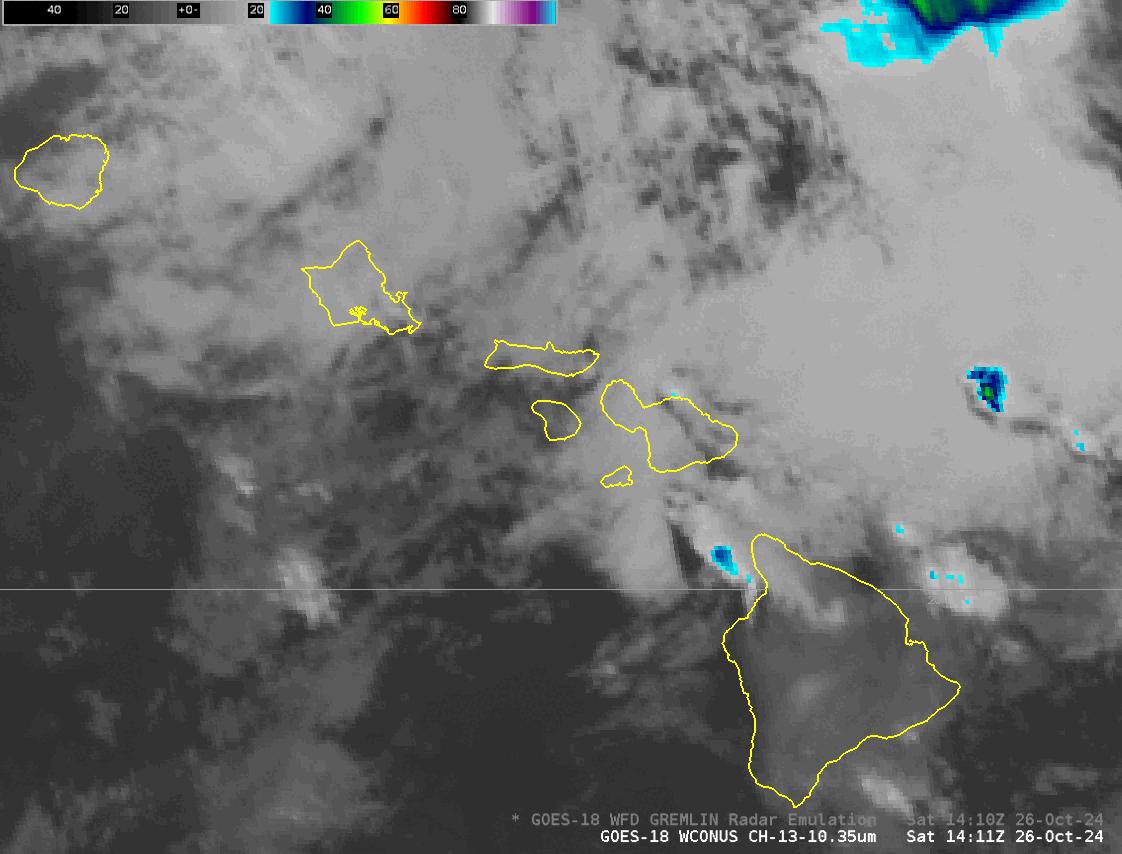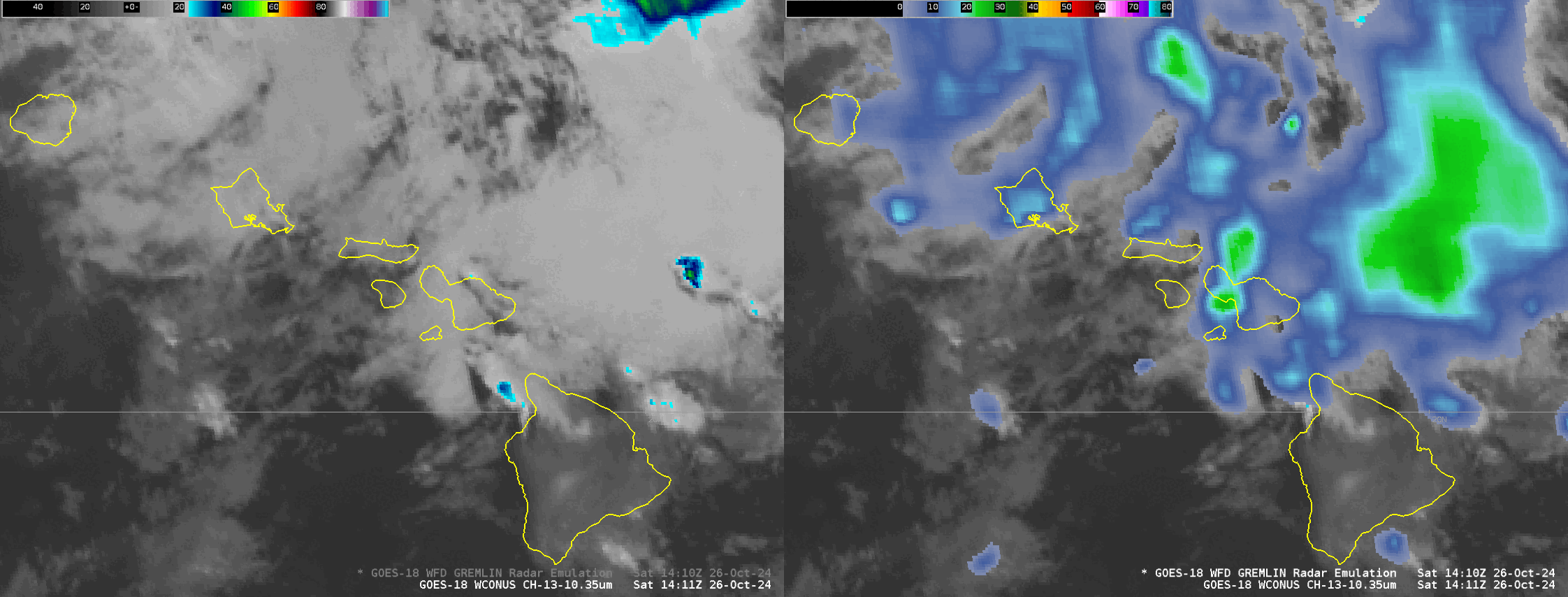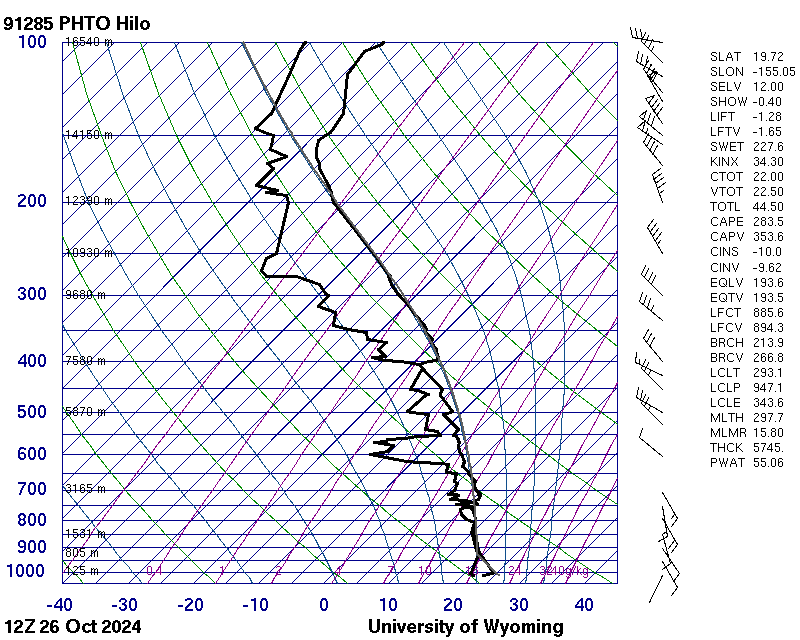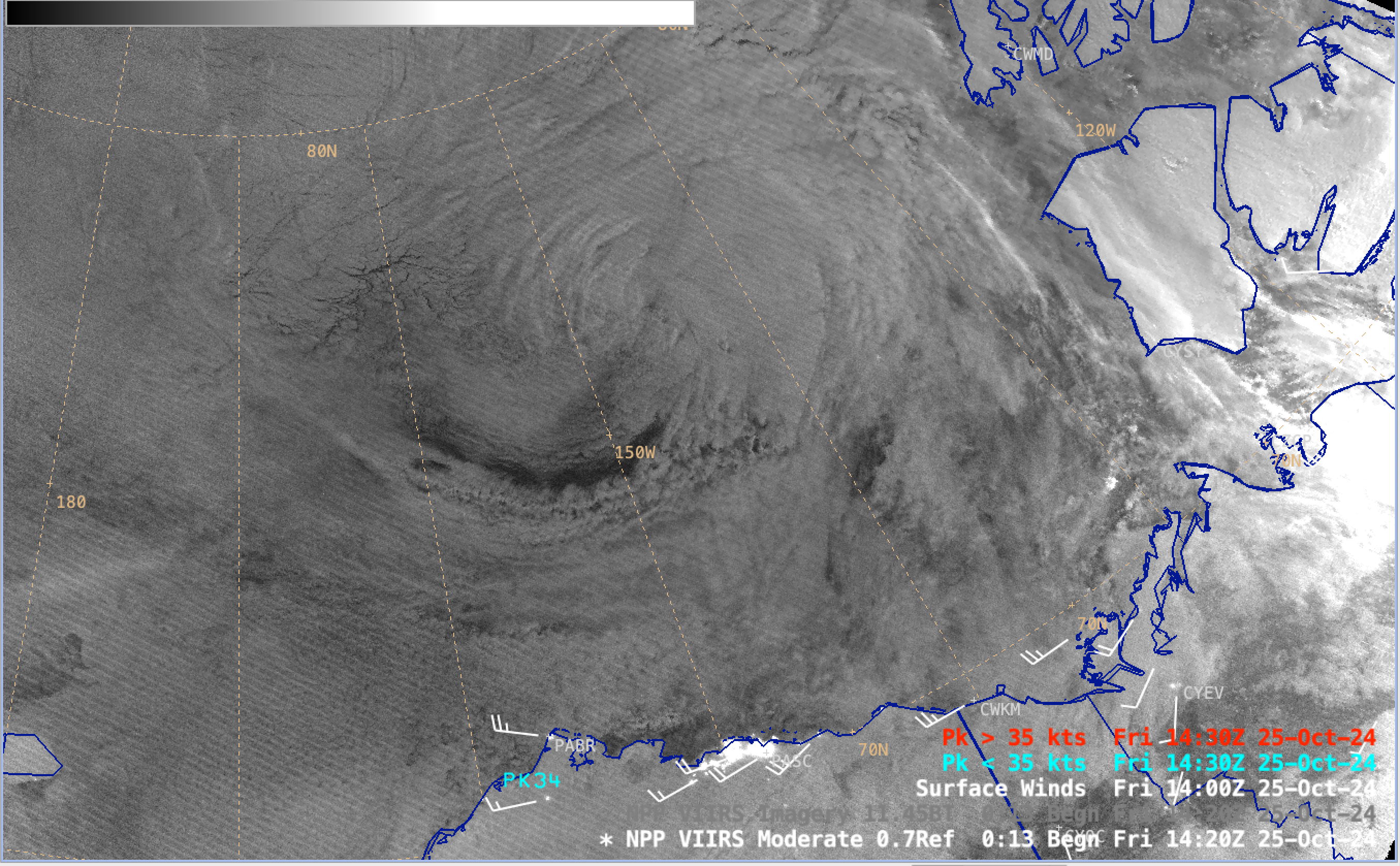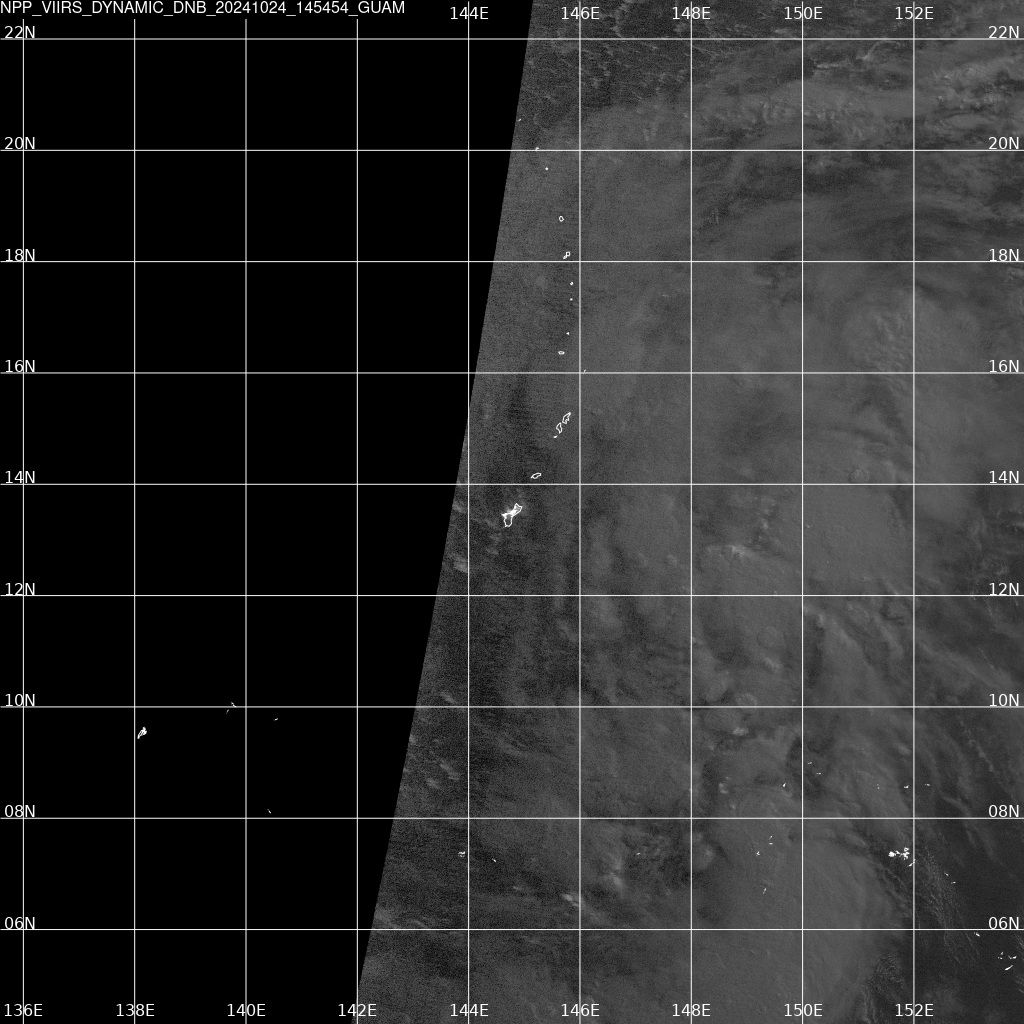
1-minute Mesoscale Domain Sector GOES-18 (GOES-West) Visible and Infrared imagery of Hurricane Kristy in the East Pacific Ocean on 23 October (above) highlighted a well-defined eye, with GLM-indicated lightning activity increasing within the inner eyewall. Cloud-top infrared brightness temperatures in the -80s C (shades of violet to purple) were apparent at times.... Read More

1-minute GOES-18 Red Visible (0.64 µm, left) and Clean Infrared Window (10.3 µm, right) images with an overlay of GLM Flash Points, from 1331-1600 UTC on 23 October [click to play MP4 animation]
1-minute
Mesoscale Domain Sector GOES-18
(GOES-West) Visible and Infrared imagery of Hurricane Kristy in the East Pacific Ocean on 23 October
(above) highlighted a well-defined eye, with GLM-indicated lightning activity increasing within the inner eyewall. Cloud-top infrared brightness temperatures in the -80s C (shades of violet to purple) were apparent at times. Kristy reached
Category 4 intensity as of the
2100 UTC advisory from NHC.
A closer view of GOES-18 Visible images (below) revealed low-altitude mesovortices within the eye.
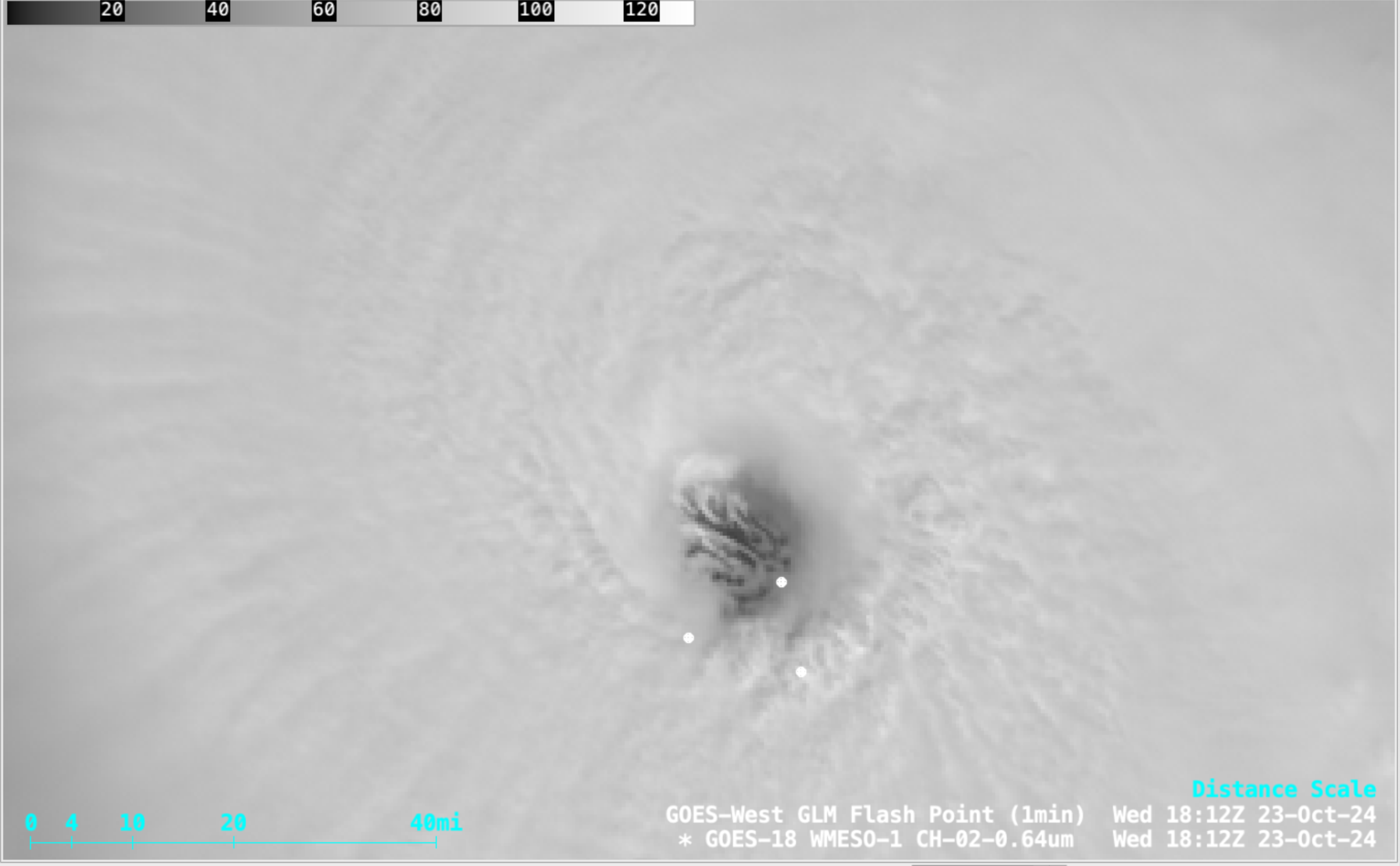
1-minute GOES-18 Red Visible (0.64 µm) images with an overlay of GLM Flash Points, from 1601-2100 UTC on 23 October [click to play MP4 animation]
Hurricane Kristy was moving through an environment characterized by low values of deep-layer wind shear, as seen in an analysis from the
CIMSS Tropical Cyclones site
(below) — a factor which favored its
rapid intensification.
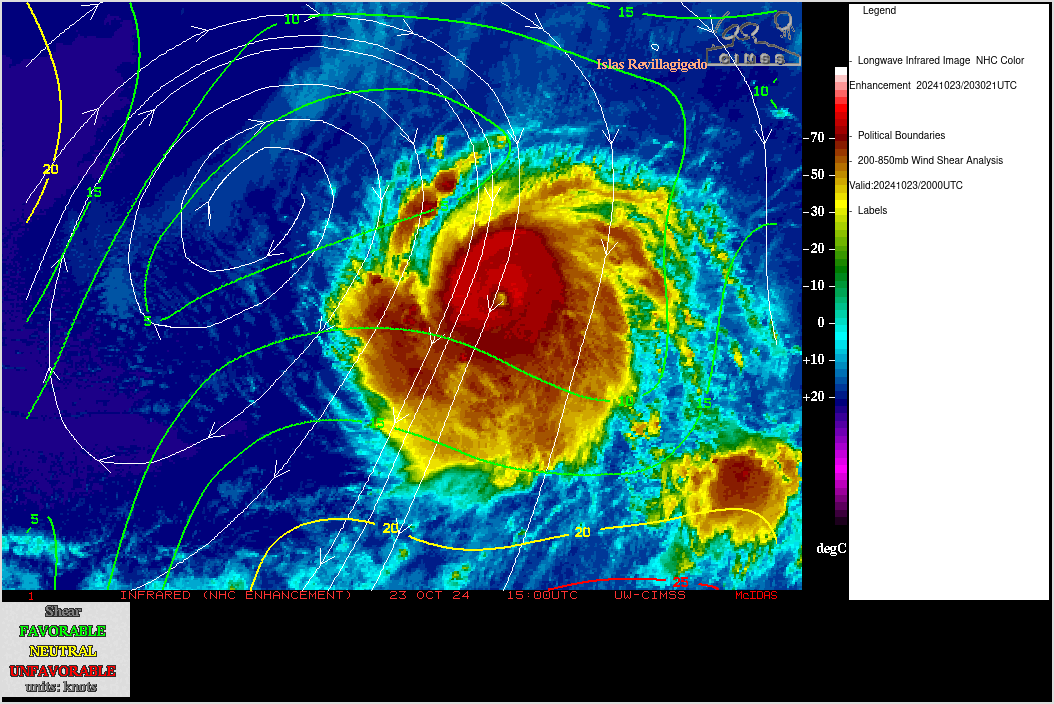
GOES-18 Infrared images, with an overlay of 2000 UTC deep-layer wind shear contours and streamlines
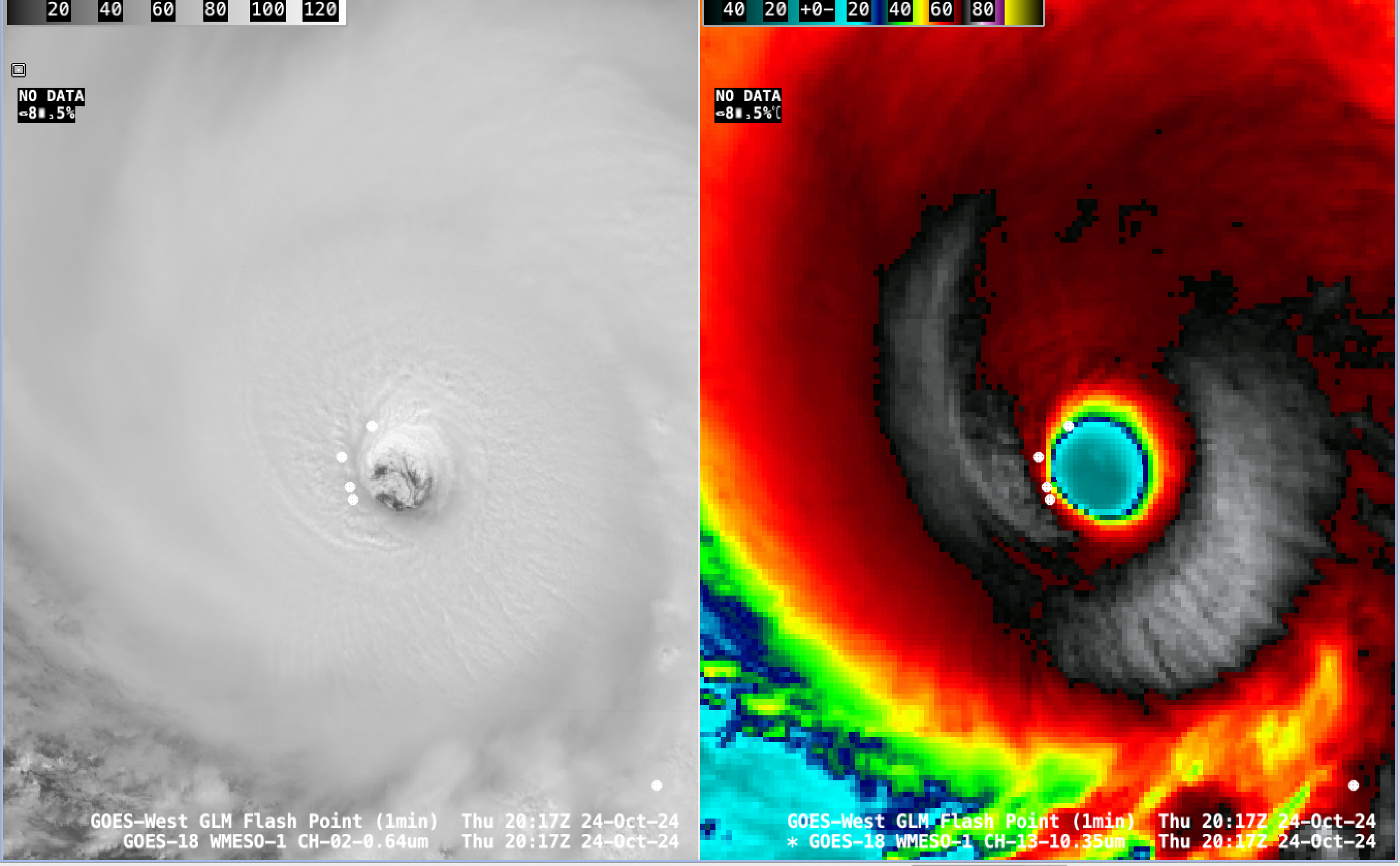
1-minute GOES-18 Red Visible (0.64 µm, left) and Clean Infrared Window (10.3 µm, right) images with an overlay of GLM Flash Points, from 1802-2300 UTC on 24 October [click to play MP4 animation]
On 24 October, 1-minute GOES-18 Visible and Infrared imagery
(above) again displayed a well-defined eye, with GLM-indicated lightning activity increasing within the inner eyewall — and cloud-top infrared brightness temperatures in the -80s C (shades of violet to purple) were apparent at times. Kristy continued to further intensify, becoming a
Category 5 hurricane as of the
2100 UTC advisory from NHC.
In a closer view of GOES-18 Visible images (below), distinct low-altitude mesovortices were once again seen within the eye.
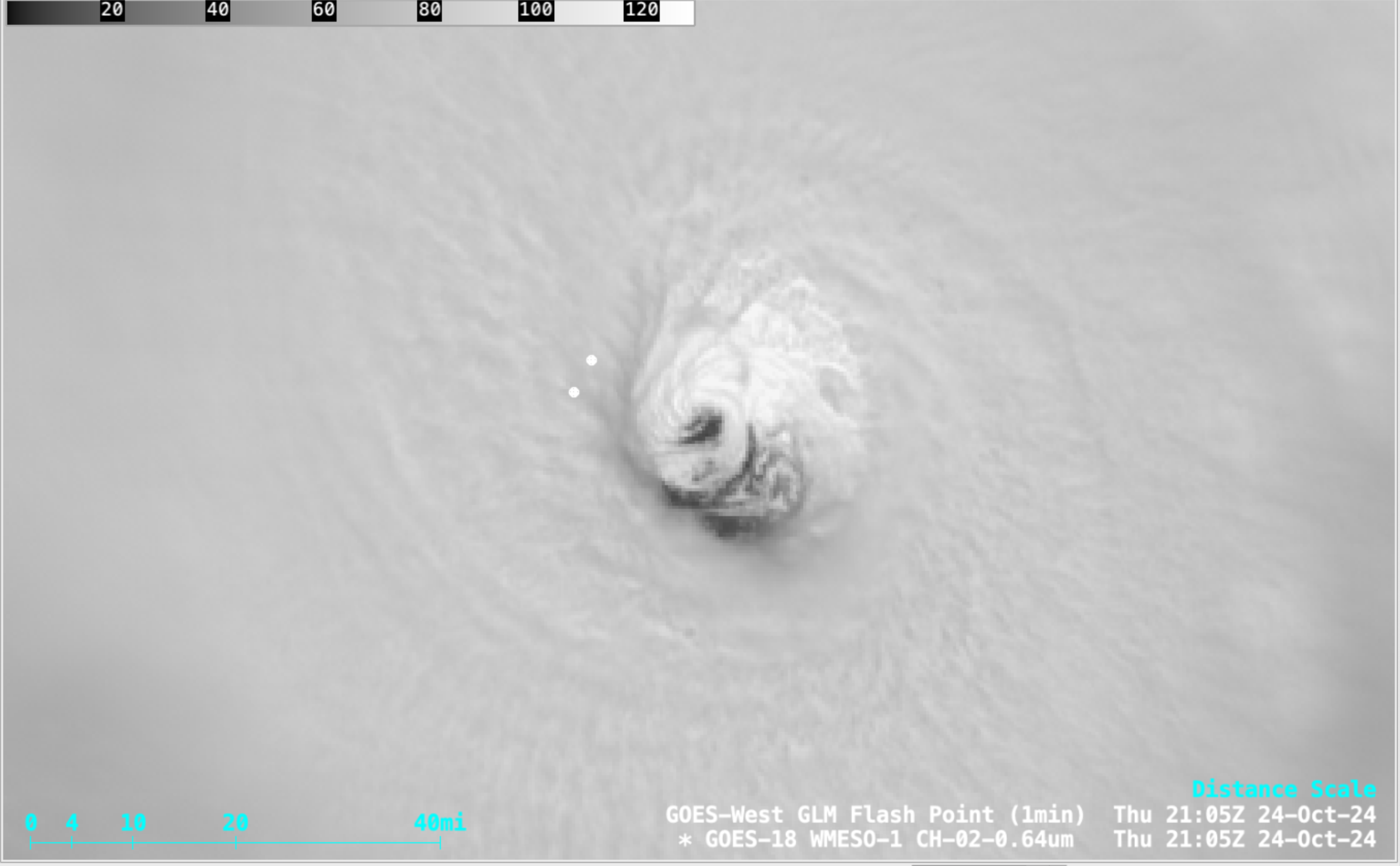
1-minute GOES-18 Red Visible (0.64 µm) images with an overlay of GLM Flash Points, from 1802-2300 UTC on 24 October [click to play MP4 animation]
Earlier in the morning, when Kristy was still a Category 4 hurricane, a Synthetic Aperture Radar (SAR) image at 1401 UTC
(below) indicated that a derived maximum wind speed of 130 knots was present in the NE quadrant of the eyewall (
source).

RCM-3 SAR image at 1401 UTC on 24 October [click to enlarge]
View only this post
Read Less
